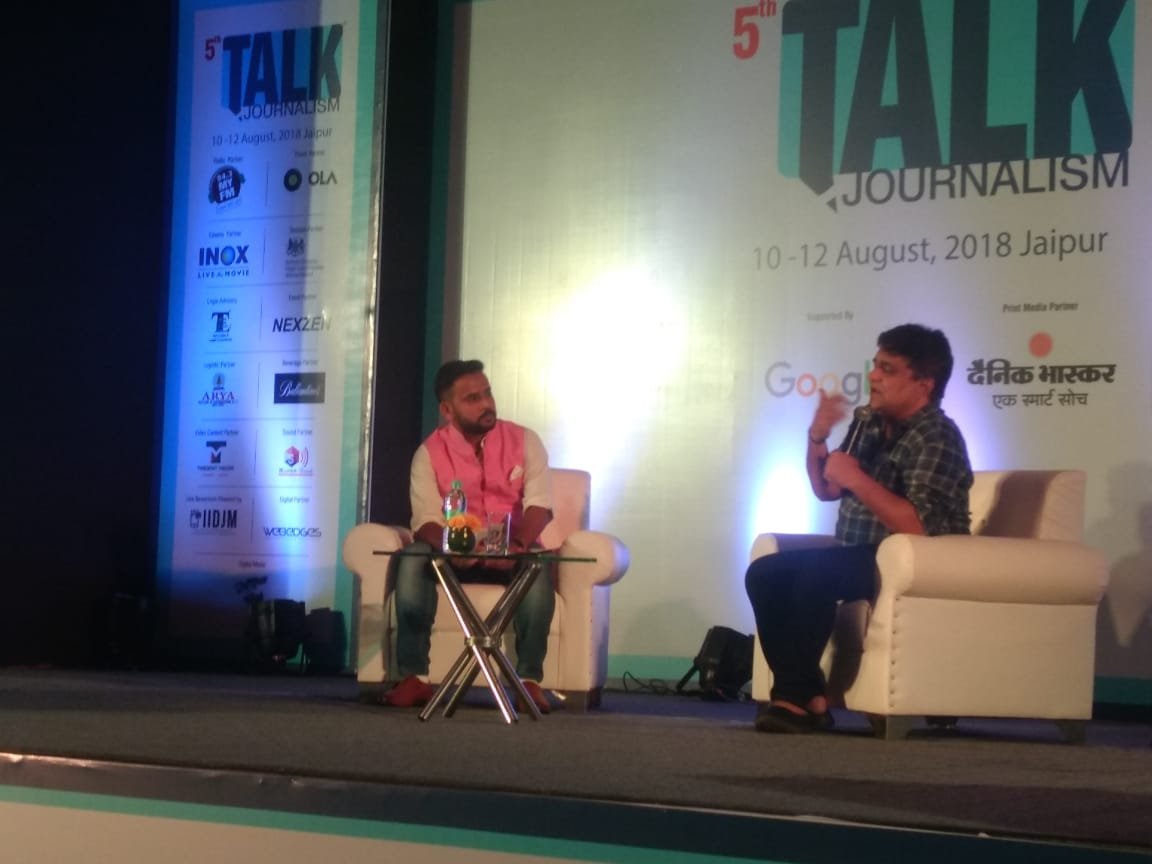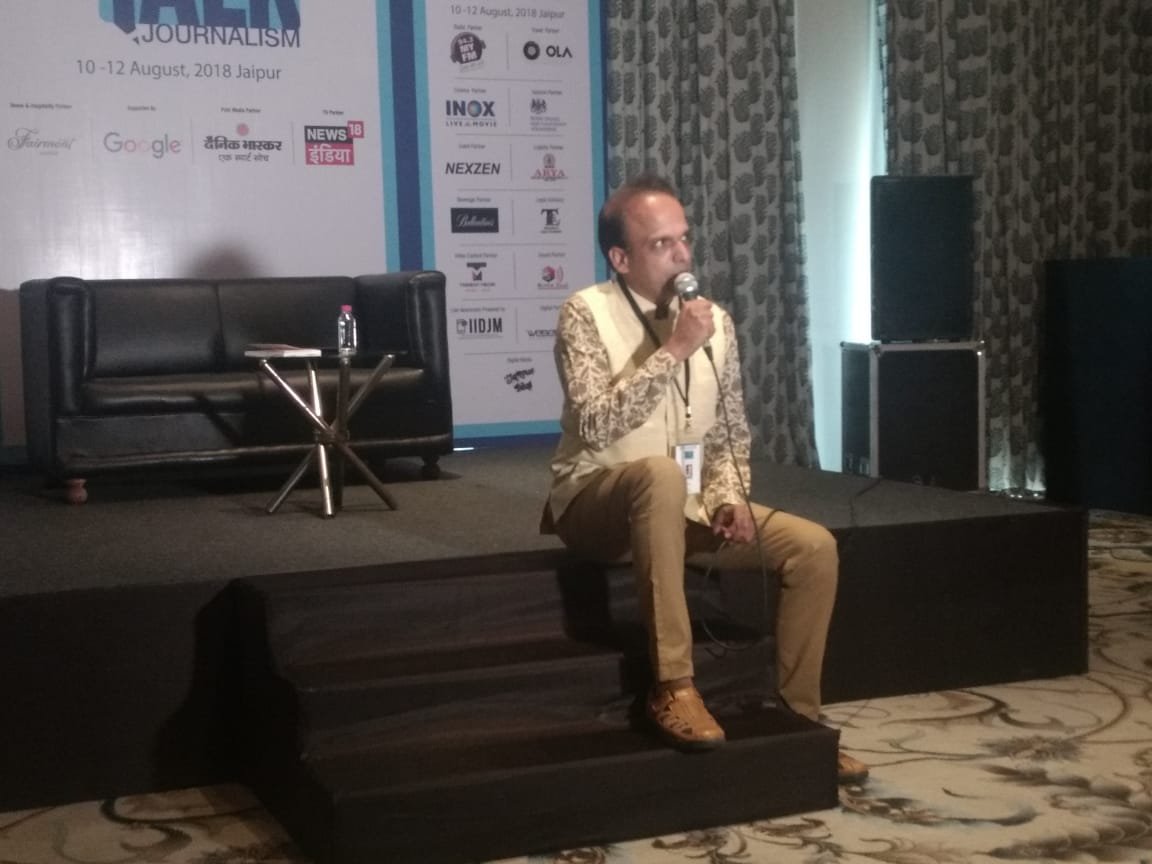By Jyoti Mamnani and Dhanraj Chauhan
Jaipur, 10 August, 2018 – Caste is a volatile topic in India. We keep reading about inter caste incidents that lead to violence, rioting, and death. Given this, what should be the role of news media in reporting caste. This is the topic on which the Founder/Editor of Desh Gujarat Japan K Pathak, spoke at the Talk Journalism event in Jaipur.
Mentioning caste when an incident takes place ensures that it becomes a high profile incident, attracting politicians, religious institutions, activists, NGOs and others. This raises temperatures all around, and, it shouldn’t be done in a sensitive society like India; said Japan Pathak in his session on covering caste bias. He gave several examples of Dalit atrocities and the communal pressure that it creates among the people. People from the lower caste have lost jobs and opportunities due to the image of them in the media
The media is credible in the matters of caste and the consumers trust them blindly. He gave examples of 2002, 2004, 2008 and the recent 2018 Maratha uprisings, as examples of the caste based bias in India due to the coverage of caste and community in the Media. According to Mr. Pathak Journalists have become activists, and only cover a story from one particular angle; he also said that journalists and media at large have to cover a story from a 360 degree angle-understanding all the peculiarities of the incident.
Desk: Vaidehi Gangan (copy edit), Jyoti Mamnani (editorial coordination)
This report was filed during Live Newsroom workshop conducted by Institute of Integrated Digital Journalism and Mass Communication (IIDJM) at Talk Journalism 2018.



